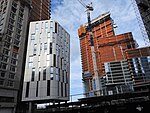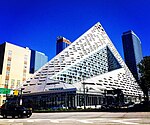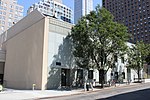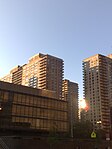One Riverside Park
Residential buildings completed in 2016Residential condominiums in New York CityResidential skyscrapers in ManhattanUpper West SideUse mdy dates from August 2019
One Riverside Park is a skyscraper at 40 Riverside Boulevard in Riverside South, on the Upper West Side neighborhood of Manhattan, New York City. Its name was later changed to 50 Riverside Boulevard following media reports related to the development's "poor door". The building consists of 33 floors containing 219 residential units.The building was designed by the architectural firm Goldstein, Hill & West Architects, who also designed the Aldyn and the Ashley, also on Riverside Boulevard, plus the Silver Towers Manhattan development. The building has a tunnel linking residents to the La Palestra Athletic Club & Spa next door in the Aldyn.
Excerpt from the Wikipedia article One Riverside Park (License: CC BY-SA 3.0, Authors).One Riverside Park
West 62nd Street, New York Manhattan
Geographical coordinates (GPS) Address Nearby Places Show on map
Geographical coordinates (GPS)
| Latitude | Longitude |
|---|---|
| N 40.774442 ° | E -73.991418 ° |
Address
West 62nd Street 497
10069 New York, Manhattan
New York, United States
Open on Google Maps







